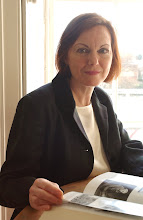
Maurice Byford contacted me with stories about his eminent ancestors, the Platt family.
The birth of Thomas Platt (1760-1842) was registered at St Dunstan in the West, Holborn, but the family moved into the Bloomsbury parish of St Andrew soon after. Thomas attended Magdalen College, Oxford, and in May 1780, was admitted as an Attorney and Solicitor in the superior courts at Westminster. He became a member of Serjeants Inn, Chancery Lane, City of London. By the early 19th century, Thomas and his wife, Catherine, were living in Brunswick Square. They seem to have had five sons and one daughter, of whom four sons survived their parents. Thomas's obituary in The Times (19 October 1842) states that he was the father of the [legal] profession for more than 60 years. He retired on the death of Lord Ellenborough and was presented with two silver vases. He completed the publication, with two others, of Flora Graeca by Dr John Sibthorpe, professor of Botany at Oxford, with whom he had studied. In 1796, Thomas helped set up a freehold estate in Sussex to fund the publication (1806-1813) of this 10-volume work.
It's likely that Thomas was interested in natural history because his father, Samuel, had a large collection of books on this subject, which he bequeathed to his third son, Samuel junior. Samuel junior (1771-1854) also became a barrister and lived at 33 Keppel Street with his wife Julia (nee Dorrell) and children. When he died, he left 'my large bookcase and all my shells, fossils and the cabinet containing fossils and subjects of Natural History' to his son, Thomas.
All of Thomas senior's sons entered the legal profession. His eldest son, Thomas Joshua (1788-1862), went to Harrow School and Trinity College, Cambridge. He was admitted to the Inner Temple (1806) and called to the Bar (1816). He was a King's Counsellor (1834), Bencher of Inner Temple (1835), Serjeant at Law (1845), knighted (1845) and Baron of the Exchequer (1845-56). He was living at 39 Tavistock Square in 1833. He married Augusta (Cuming) at St George, Bloomsbury, in 1814. Nine of their children were baptised at St Pancras Old Church (1815-1832). Their son, Charles (1820-1902), also attended Trinity College, Cambridge, and was called to the Bar in 1852.
Thomas and Catherine's second son, Samuel (1795-1862), followed his brother to Harrow School and Trinity College, Cambridge, but transferred to Magdalen College, Oxford. He was admitted to the Inner Temple (1818) and called to the Bar (1825). He was a Justice of the Peace and Deputy Lieutenant for Middlesex. In 1841, he was living at 22 Russell Square.
Their third son, George (1802-) was the solicitor for the 1841 Census, at which time he was living with his wife, Sophia, at Sayers Street in the parish of St Andrew, Holborn. Their fourth son, William (1804-) attended Brasenose College, Oxford, and was called to the Bar in 1830.
This is a greatly condensed version of the very complicated family history sent by Maurice, so I hope I've entered everything correctly. This is a family with strong Bloomsbury roots. As members of the legal profession, they lived in an area easily accessible to all the Inns of Court in London.
The picture shows the title page of a book entitled Delightes for ladies, to adorne their persons, tables, closets, and distillatories: with beauties, banquets, perfumes and waters (1611) by Sir Hugh Platt, an ancestor of the legal Platts, whose own son, William, was admitted to the Inns of Court in 1612.






